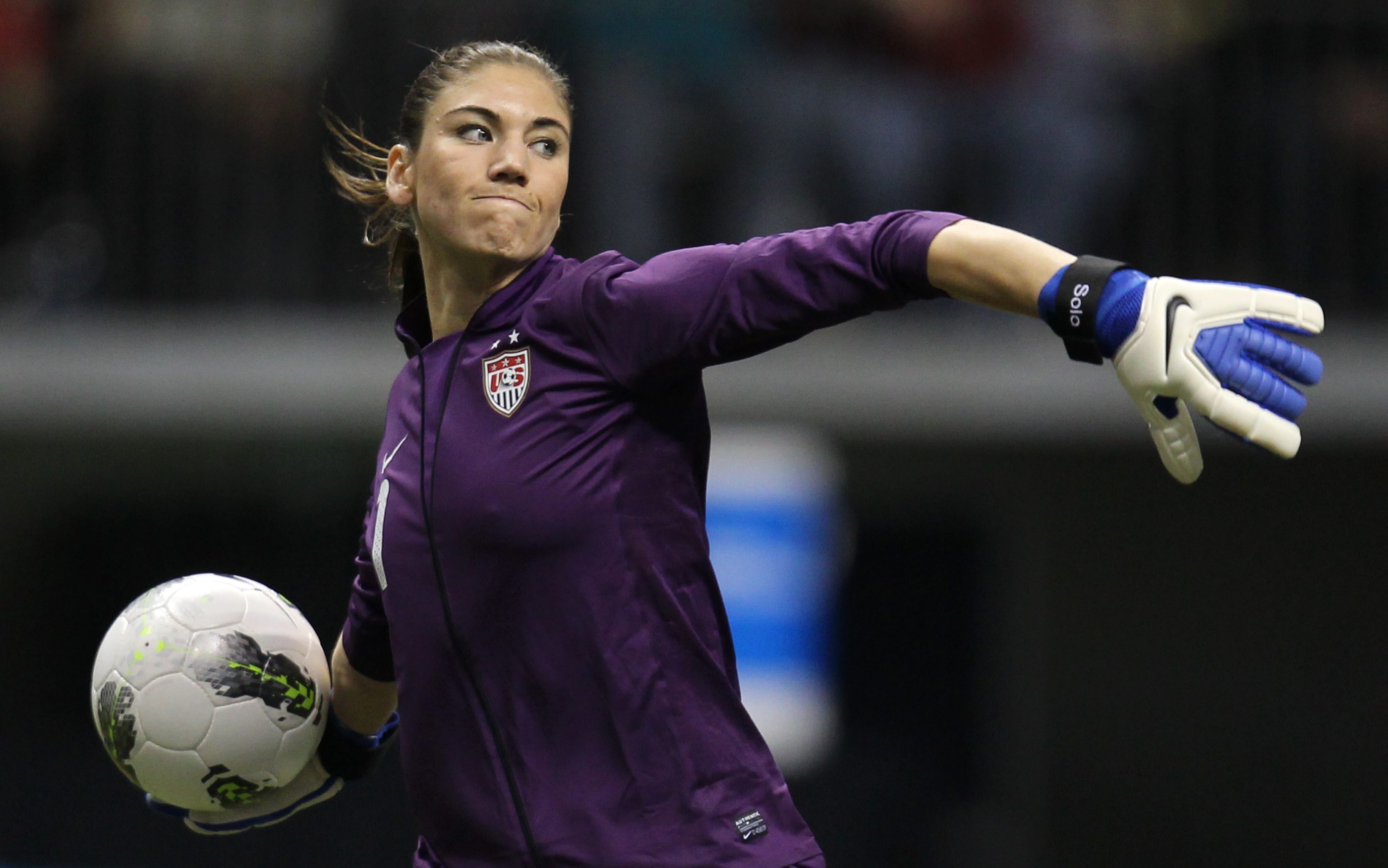If you live in an area where soccer supersedes sport into pastime (i.e. almost everywhere but the United States), you probably noticed the brouhaha surrounding last year’s (male) World Cup, which is conspicuously absent amid this summer’s Women’s World Cup. Bars erupted with public viewings, Twitter seemingly overflowed, art nerds outed themselves as diehard football fans. Autumn Whitefield-Madrano has written about the comparatively unpopular world of women’s soccer, and the inspiration in watching women strive for athletic greatness while not giving a shit about what they look like. (My only qualm–do these things have to be mutually exclusive? And do we really have to bring athletics back to a woman’s appearance again, as always?) Read an excerpt below, or the full piece on The New Inquiry.
I’ve been watching a lot of the Women’s World Cup, with a fervor that surprises even me. I’m an unlikely soccer fan to begin with; sports, personally speaking, have traditionally been something to be avoided and/or feared. But after I shocked myself last summer by watching literally every single World Cup match—including dual-screening it for games that overlapped—I surrendered in full to the beautiful game.
Women’s soccer, though? I didn’t follow it. I supported it politically, of course, but it was rare to find a women’s game on TV. I muddled through a couple of U.S. Women’s National Team matches, but I didn’t know the players, which detracted from its appeal. Knowing that the Fox networks were going to broadcast all the games of the Women’s World Cup, I decided to give it a go, since the tournament would give me plenty of opportunities to become familiar with the players. I’d hoped to be as entertained as I was with the men’s version last year, and I have been. What I didn’t expect to be was moved.
The playing is excellent, of course; it’s the best female soccer players in the world, after all. But what moves me is not a beautiful pass, or a bad refereeing call, or even the players’ backstories. What moves me is the players’ faces, and watching women want. It’s not hard to find images of women in the public act of doing beyond what’s been allotted by tired stereotypes. We see women legislating, creating, speaking, protesting—images that weren’t available just a couple of generations ago. But we still don’t often see women in the act of wanting. And we need to see this, because when you’re in the act of wanting something badly enough, there isn’t room for self-consciousness. How you look, your stance, your hair, your makeup, whether you appear pretty, your sex appeal: all of these things that coalesce in my brain, and maybe yours, to form a hum so low and so constant that I take it as a state of being—and when you want, they disappear. When you want, the want goes to the fore. The you can take a backseat.
What do you look like when you want? In my case, I can’t really say. There are plenty of things in this world that I want, but most of my deepest desires make wanting a state, not an act: I want to do meaningful work, I want to be happy, I want to give and receive love. The closest I know to the act of wanting in the ways female athletes want is perhaps the state of flow. In those rare moments of flow, self-consciousness falls away. It’s a gift when it happens. But I’ve never had occasion to test how far the flow state really goes as far as lifting my own awareness of how I appear. Even when my entire being is focused on a desire, I’m probably not at risk of truly breaking any sort of code of feminine regulation. I don’t really know what I look like when I’m writing but I imagine the weirdest thing my face does is frown a lot. I probably look weirder in the context of sexual desire, but the contortions particular to the “O” face get a pass of sorts.
When I watch the athletes of this World Cup, I see an entirely different way that desire becomes focused. Specifically, I see desire become externalized. Elite athletes have spent their entire lives articulating themselves through moving their bodies. To watch them want something is an exercise in watching desire become a visual, physical force.
http://thenewinquiry.com/wp-content/uploads/2015/06/the-beheld-christine-sinclair-383x330.png
